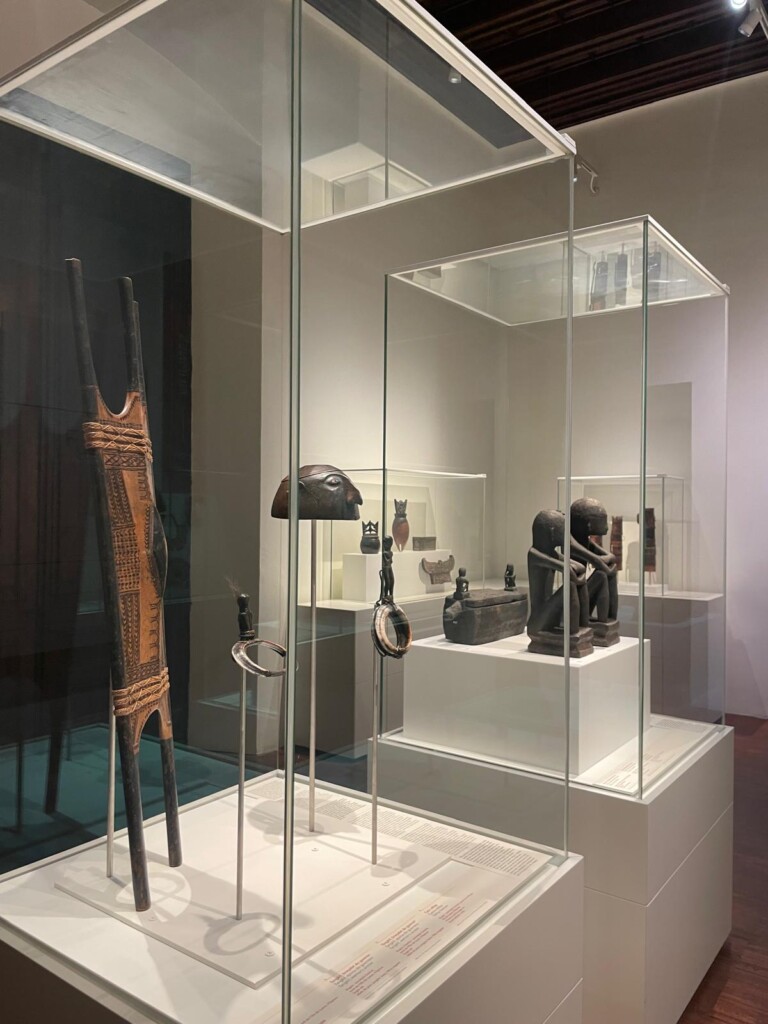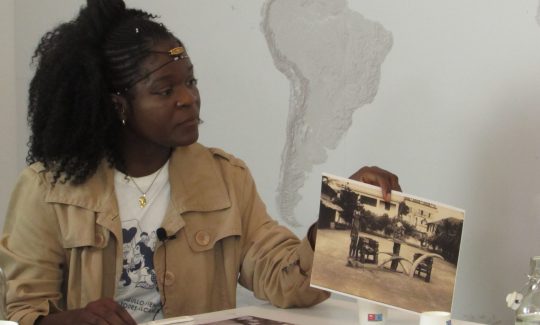The first recorded mention of the collection deposited by José Coronado Ladrón de Guevara takes us back to the colonial exhibition held in Madrid’s Retiro Park in 1887. Under the name Exposición General de las Islas Filipinas, the event brought together many of the artefacts that now form part of the Philippine collections held in various museums across Spain. Of the 400 artefacts in the collection of Museum of Ethnology and World Cultures of Barcelona (MUEC), nearly half were exhibited during that event.
After the event ended, many of the artifacts remained in the Museo Biblioteca de Ultramar until it was closed in 1896. This museum was installed in the Palacio de la Minería. But this was probably not the case with the MUEC collection: it probably traveled to Barcelona once the event was closed. According to the MUEC’s own museography, the collection was exhibited during the Universal Exhibition of Barcelona in 1888, although there is no evidence in this regard and it is possibly a mistake.
In August 1895, the nearly 400 artifacts that make up the collection were already in Barcelona. Specifically, in the Sant Gervasi neighborhood, where the collector resided and where the Junta de Museus de Catalunya sent a technical commission between October and November of the same year, in order to examine the collection. On this occasion, the collection would not be considered suitable for inclusion in Catalan museums. A year after the loss of the Philippine colony, and probably for this reason, it was accepted, and finally deposited in the Museo Histórico Arqueológico in 1900.
In 1902, according to the statistical yearbook of the city of Barcelona, the collection was located in the Museum of Decorative and Archaeological Art, located in the Palau Reial (current building of the Parliament of Catalonia); in 1903, in the Museum of Curious Objects and Memorable Events; in 1907, in the Museum of Decorative and Archaeological Art. These last changes were only nominal, since in practice the artifacts remained in the same space, that is, in the Ciutadella building.
In 1932 the Museo de Arte Decorativo was dismantled, and the collections were divided between the Museu Arqueològic de Catalunya and the Museu d’Art de Catalunya for their formation. The collection probably ended up in the latter, given that we can currently find documents linked to it – basically lists of artefacts and correspondence – in the archive of this museum.
According to one of these lists, the collections left the Museu d’Art de Catalunya for the City’s Historical Archive and the Ethnographic Museum before 1941. Although the existence of any ethnological or ethnographic museum is not known at this time, according to the MUEC’s curators, the project already existed in the 1930s, but it must have been interrupted by the war.
The artifacts probably remained in the warehouses of the Historical Archive until, before 1949, the Museum Board transferred the collection to form the Ethnological Museum of Barcelona, an institution where it remains to this day.



